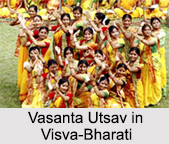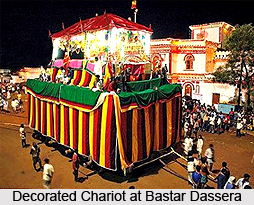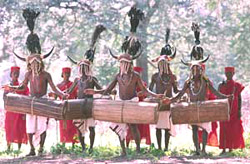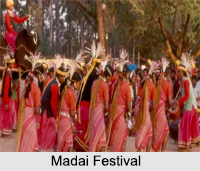Celebrated by the Khasi tribe, the Nongkrem Dance Festival is one of the most important festivals of Meghalaya. It is a harvest festival that is held during the season of autumn at Smit, the cultural centre of the Khasi tribe. Also known as Ka Pemblang Nongrem, the popular Nongkrem Dance Festival is a five days long religious tribal festival in the north eastern state of India.
Origin of Nongkrem Dance Festival
The festival of Nongkrem was celebrated by the tribes since the ancient times at Nongkrem, headquarter of Khyrim state. The word "Nongkrem" literally means "goat killing ceremony". The festival is performed to appease the all powerful Goddess "Ka Blei Synshar" for a rich harvest and prosperity of the people. This unique dance is performed by the members of the Hima Khyrim, a sub-tribe of the indigenous Khasi tribe.
Rituals of Nongkrem Dance Festival
The "Syiem of Khyrim" with the high priest presents the "Pomblang" ritual, which is the ritualistic sacrifice of goat. A significant part of this festival is "Pomblang". He suggests oblation to a "Lei Shillong"; the God of Shillong peak by sacrificing a cock. After that, offerings are made to the predecessor and ancestors of the ruling clan to the deity of Shillong peak.
After the religious festivities, the members of the tribe wear silver or gold crowns to signify the glory and dignity of the Khasi society. The traditional Nongkrem dance is performed by both male and female members of the tribe. The dance performed by the men is known as "Ka Shad Mastieh". They dance by holding the sword in their right hand and whisks in their left. Unmarried women participate in this dance form clad in exotic ethnic attire of red and yellow. The costumes of Nongkrem dance is made of expensive silk cloth which is stitched by a special class of weavers called "Salkuchi". Music is an important part of the dance and instruments like drums, pipes, flutes, cymbals, etc are played.
The Nongkrem Dance Festival is one of the most revered festivals of Meghalaya which is celebrated to pay homage to the local God of Meghalaya. The purpose of this festival is to preserve the rich heritage of the state along with promoting tourism in Meghalaya.





